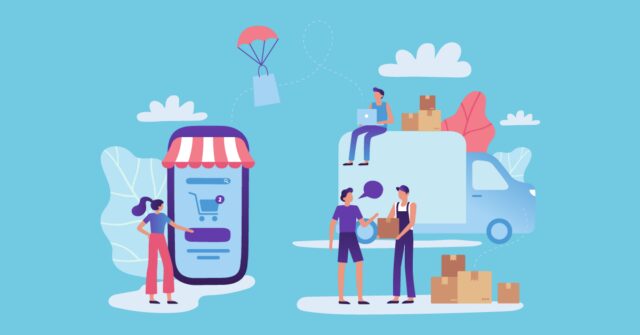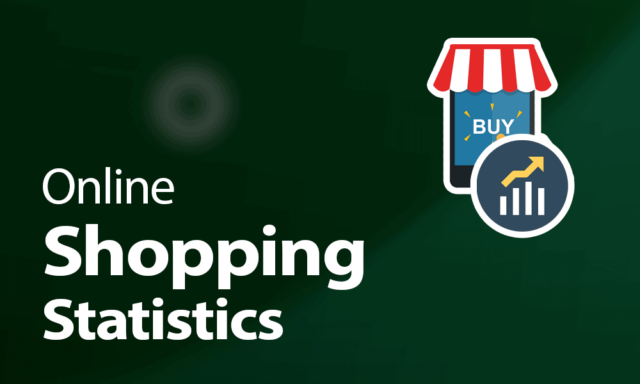
The number of individuals using the Internet to fulfill their shopping requirements has increased significantly over the past few years, which has led to a major rise in the popularity of online shopping. The convenience of being able to purchase from the comfort of one’s own home, the accessibility of a greater variety of goods, and the simplicity with which one can compare prices have all contributed to the meteoric expansion of e-commerce in recent years.
In this article, we will take a look at some of the most recent developments and data in the realm of online shopping, and we will investigate what these developments mean for both customers and retailers.
Online Shopping Trends

The ongoing expansion of mobile commerce, often known as m-commerce, is one of the most significant trends that can be observed in online buying. Customers can now shop online whenever they want, from any location, thanks to the proliferation of mobile devices such as smartphones and tablets. A recent survey found that more than 70 percent of people who buy online do so using their mobile devices, and the majority of these people utilize mobile applications rather than mobile websites to make their purchases.
The advent of social commerce is yet another development that has taken place during the past few years. The act of purchasing online is now significantly influenced by the use of social media sites such as Facebook, Instagram, and Pinterest. It is now simpler than ever before for customers to buy the things they want because social media channels allow them to browse products, read reviews, and make purchases directly from the platform.
One of the trends impacting the world of online shopping is changing consumer habits. Today’s consumers are more digitally savvy than ever before, and they expect a seamless online shopping experience.
One area where this is particularly evident is in the realm of personalization. Consumers want to feel that the products and services they are buying have been tailored to their specific needs and preferences. This has led to an increase in the use of data and analytics to help businesses better understand their customers and provide more personalized experiences.
Online Shopping Statistics
According to findings from recent studies, the amount of money that will be made through online commerce around the world in the year 2021 will be roughly $5.2 trillion. This is projected to grow by more than 56% over the course of the next few years, which underlines the growing significance of online shopping in today’s economy.
This expansion is being propelled by a multitude of factors, some of which include the meteoric development of mobile commerce, the ever-increasing popularity of online marketplaces such as Temu, Amazon, and eBay, and the increase in the number of individuals purchasing online.
Benefits of Online Shopping

Doing one’s shopping online offers a variety of benefits that cannot be matched by purchasing in traditional stores constructed of brick and mortar. To begin, it gives customers the ability to shop without requiring them to leave the comfort of their own homes, which saves them both time and the trouble of going out. When consumers buy online, they have access to a larger number of products and brands, which makes it simpler for them to locate exactly what they’re looking for. This is an additional benefit of shopping online.
Performing price comparisons and locating the best discounts is made much simpler when one does their shopping online. Consumers are able to simply and rapidly compare prices among a wide variety of retailers, increasing the likelihood that they will get the most value for their money. It just takes a few clicks of their mouse, that’s all it takes.
Challenges of Online Shopping

Although there are numerous benefits to making purchases online, there are also many drawbacks and challenges associated with this method of shopping. Consumers are concerned about a variety of issues, the foremost of which is the security of their own personal and financial information. Because identity theft and other types of internet fraud are such widespread issues, customers who do their shopping online need to exercise extreme vigilance to avoid being victims of these crimes.
One of the drawbacks of making purchases online is that customers do not have the ability to personally interact with the products they buy. In contrast to what is accessible in traditional stores, buyers are unable to touch, feel, or try on items before making a purchase. Dissatisfaction and irritation are two common responses that people have when they believe that a product does not live up to their expectations.
Conclusion

The world of retail has changed dramatically in recent years with the rise of online shopping. Today, consumers can purchase almost anything they need or want online from the comfort of their own homes. This has led to a significant shift in the way that consumers shop and has had a profound impact on businesses of all sizes.
To summarize, internet shopping is not going away, and its prevalence is only going to increase in the years to come as technology continues to advance. E-commerce is undergoing rapid development on all fronts, from the proliferation of mobile commerce to the introduction of social commerce; as a result, firms need to adapt in order to maintain their position as market leaders.
The purchasing and selling of goods are being fundamentally altered by the rise of Internet shopping because it gives customers a way to shop that is more convenient and adaptable. On the other hand, it also presents a number of obstacles, and businesses have a responsibility to take the necessary precautions to ensure that customers feel safe and secure when they shop online.
The growth of online shopping is generally a trend that may be viewed as beneficial, not just for customers but also for retailers, as it brings with it a number of advantages that will continue to have an impact on the way we buy in the years to come.













